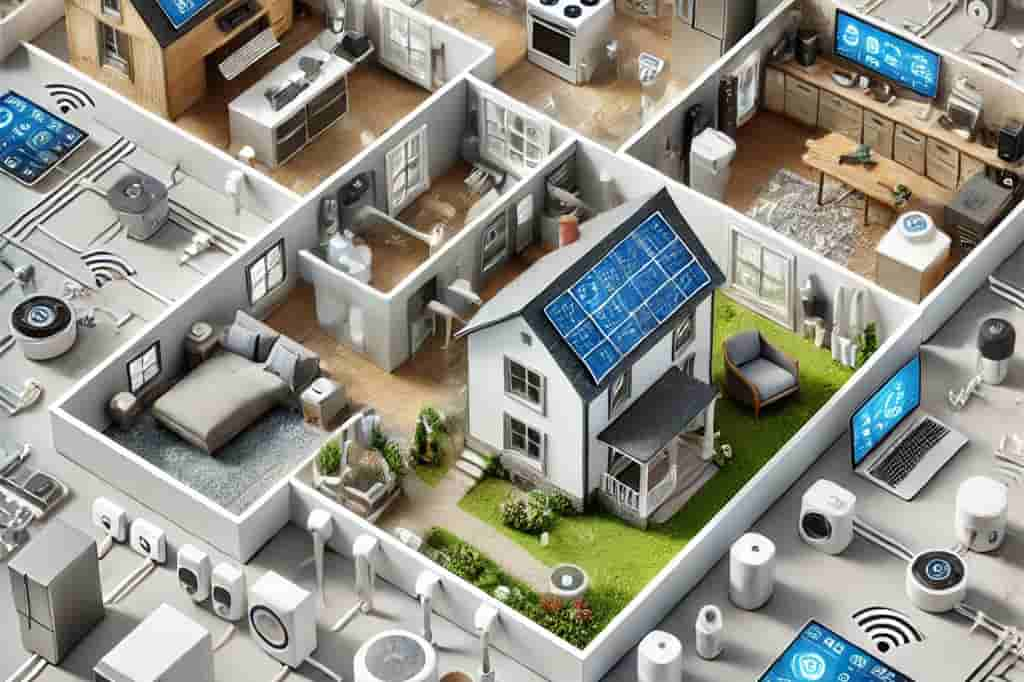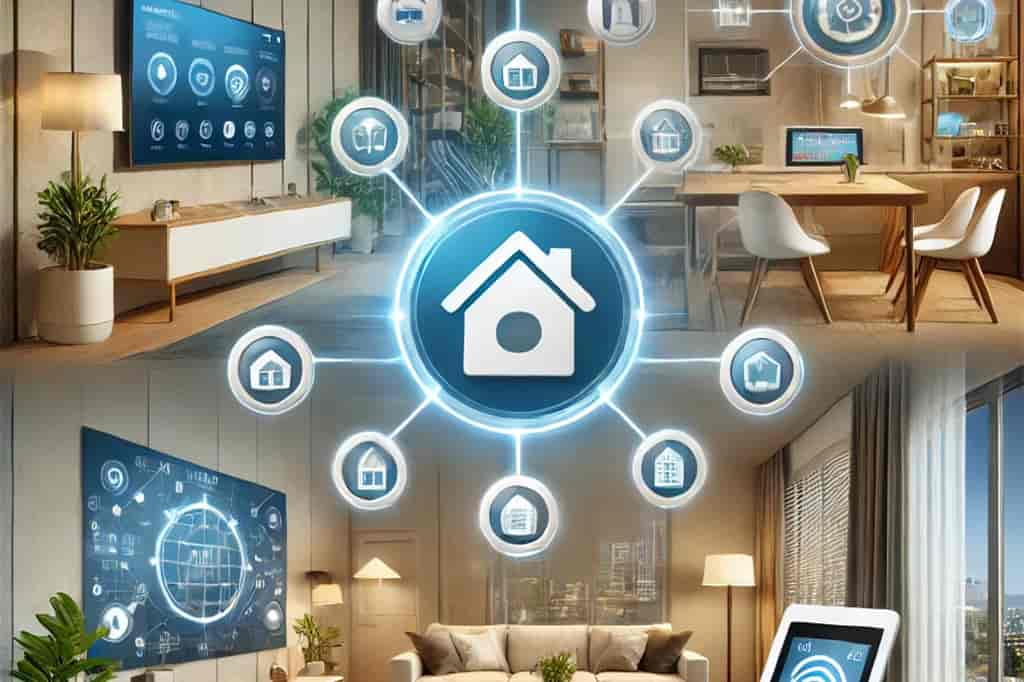This article will delve into the core functions, various types, practical applications, user experiences, and security impacts of housing connectors. By exploring these aspects, we aim to provide you with a comprehensive understanding of how housing connectors work and why they are so vital.Moreover, we will demonstrate how the expertise and high-quality products from Konnra can assist you in optimizing your smart home integration. From providing reliable and compatible connectors to offering expert guidance, Konnra is here to help you achieve a smarter, more connected home environment. So, let’s dive into the details and discover how housing connectors can transform your smart home experience.

Ⅰ. Basic Functions and Advantages of Housing Connectors
Functions of Housing Connectors
At its core, a housing connector serves as the bridge between various smart home devices, enabling them to communicate and work together harmoniously. These connectors facilitate:
Device Integration: Housing connectors connect devices like lights, thermostats, security systems, and appliances to a central hub or network. This integration allows different devices to work together, providing a cohesive smart home experience.
Centralized Control: They allow users to manage all connected devices from a single interface, whether it’s a smartphone app, voice assistant, or control panel. This centralized control simplifies the user experience, as you don’t need multiple apps or controls for different devices.
Automation: Housing connectors enable the automation of daily tasks by setting up schedules and routines. For instance, you can automate turning off lights at bedtime or adjusting the thermostat based on your daily schedule.
Advantages of Housing Connectors
The benefits of using housing connectors are numerous:
Compatibility: They support a wide range of devices from different manufacturers, reducing the hassle of finding compatible products. This broad compatibility ensures that you can integrate almost any smart device into your home without worrying about connectivity issues.
Ease of Use: Most housing connectors are designed to be user-friendly, with simple installation processes and intuitive interfaces. This ease of use makes it accessible even for those who are not tech-savvy.
Enhanced Convenience: By centralizing control and enabling automation, housing connectors make managing a smart home easier and more efficient. They save time and effort, allowing you to focus on more important tasks.
Ⅱ. Types of Housing Connectors
Understanding the different types of housing connectors available can help you choose the right one for your needs:
Wired Connectors
Overview: These connectors use physical wiring to connect devices. They are typically more stable and reliable than wireless options, providing a consistent connection that is less prone to interference.
Pros: Wired connectors offer consistent performance, less interference, and better security. The physical connection ensures a stable and reliable communication channel.
Cons: They require more complex installation and have limited flexibility in device placement. Running wires through your home can be cumbersome and may require professional installation.
Wireless Connectors
Overview: Wireless connectors use Wi-Fi, Zigbee, Z-Wave, or other wireless protocols to link devices. They are becoming increasingly popular due to their ease of installation and flexibility.
Pros: Wireless connectors are easier to install and provide greater flexibility in device placement. They are scalable, allowing you to easily add more devices to your smart home system.
Cons: They are potentially subject to interference from other wireless devices and may require regular updates and maintenance to ensure security and performance.
Hybrid Connectors
Overview: These connectors combine wired and wireless capabilities, offering the benefits of both. They provide a versatile solution that can adapt to different needs and environments.
Benefits: Hybrid connectors offer enhanced reliability and flexibility, making them suitable for larger and more complex smart home setups. They provide the stability of wired connections for critical devices while offering the convenience of wireless for others.
Ⅲ. Application of Housing Connectors in Smart Home Devices
Housing connectors play a crucial role in integrating various smart home devices, enhancing their functionality, and providing a seamless user experience. Here are some common applications:
Lighting Control
Integration: Housing connectors can integrate smart lighting systems, allowing users to control lights remotely, set schedules, and create lighting scenes for different occasions. This integration can be as simple as connecting smart bulbs to a central hub or as complex as installing smart switches and dimmers throughout your home.
Benefits: Centralized lighting control adds convenience and contributes to energy savings. You can easily turn off all lights when you leave the house or set them to dim gradually in the evening to save energy.
Climate Control
Integration: Connecting thermostats and HVAC systems through housing connectors enables precise climate control. Users can adjust temperatures remotely, set heating and cooling schedules, and optimize energy usage based on occupancy patterns.
Benefits: Smart climate control enhances comfort and reduces energy costs. For example, you can set the thermostat to lower the temperature when you’re not home and raise it just before you return, ensuring a comfortable environment while saving energy.
Security Systems
Integration: Integrating security cameras, alarms, and sensors with housing connectors enhances home security. Users can monitor their homes in real-time, receive alerts about suspicious activities, and automate responses to potential threats.
Benefits: Enhanced security and peace of mind. You can receive notifications on your smartphone if a security camera detects movement or if a door sensor is triggered, allowing you to respond quickly to potential issues.
Appliance Control
Integration: Managing kitchen and household appliances becomes effortless with housing connectors. From turning on the coffee maker in the morning to starting the washing machine remotely, automation simplifies daily chores and saves time.
Benefits: Increased convenience and efficiency in daily tasks. You can set your coffee maker to start brewing as soon as you wake up or schedule the washing machine to run during off-peak hours to save on energy costs.

Ⅳ. User Experience and Convenience
Ease of Installation and Setup
Housing connectors are designed to be easy to install, often requiring no special tools or technical expertise. Most products come with detailed instructions, and many manufacturers offer online tutorials and customer support to assist with setup. This ease of installation makes it possible for almost anyone to set up a smart home system without needing to hire a professional.
Daily Usage and Interface
The daily use of housing connectors is typically straightforward. Most systems provide a user-friendly interface, whether it’s through a dedicated app, a smart home hub, or voice control. Users can easily customize settings, monitor device status, and control their smart home environment with minimal effort. For instance, you can use a mobile app to adjust your thermostat, check the status of your security system, or turn off lights, all from the convenience of your smartphone.
User Feedback and Satisfaction
Real-world experiences highlight the positive impact of housing connectors. Many users report increased convenience, improved energy efficiency, and enhanced home security. Testimonials often mention the ease of integrating multiple devices and the simplicity of managing them through a single platform. For example, a user might describe how integrating their smart thermostat, lights, and security system through a housing connector has made their home more comfortable, secure, and energy-efficient.
Ⅴ. Impact of Housing Connectors on Smart Home Security
Data Security Measures
Housing connectors employ advanced encryption and secure data transmission protocols to protect user data. This ensures that information exchanged between devices and the central hub remains confidential and safe from unauthorized access. For instance, if you’re using a housing connector to manage your security cameras, the video feed is encrypted to prevent hackers from accessing it.
Privacy Protection
Manufacturers are increasingly focusing on privacy protection, implementing measures to safeguard personal data and usage patterns. Users can have peace of mind knowing their privacy is a priority, with robust systems in place to prevent data breaches. This includes features like anonymizing user data and providing clear privacy policies that explain how your data is used and protected.
Risk Mitigation Strategies
To mitigate security risks, it’s crucial to choose reliable products from reputable Connector Manufacturers. Regular software updates and security patches are essential to address vulnerabilities and enhance the overall security of the smart home system. Users should ensure that their housing connectors and associated devices are always running the latest firmware to protect against new threats.
Ⅵ. Conclusion
Housing connectors are essential in smart home integration, providing the backbone for a connected, automated, and efficient living environment. Their ability to integrate various devices, offer centralized control, and enhance user convenience makes them indispensable in modern homes. As technology advances, the capabilities and security features of housing connectors will continue to evolve, further enriching the smart home experience.
If you’re considering upgrading your home with smart technology, exploring the range of housing connectors is a great place to start. Their ability to streamline and enhance your smart home setup makes them a worthy investment. For more information on high-quality connectors and wiring harnesses, visit the Konnra website. You’ll find detailed product information, expert advice, and resources to help you find the best solutions for your needs. Discover how Konnra can help you create a smarter, more connected home environment today.









